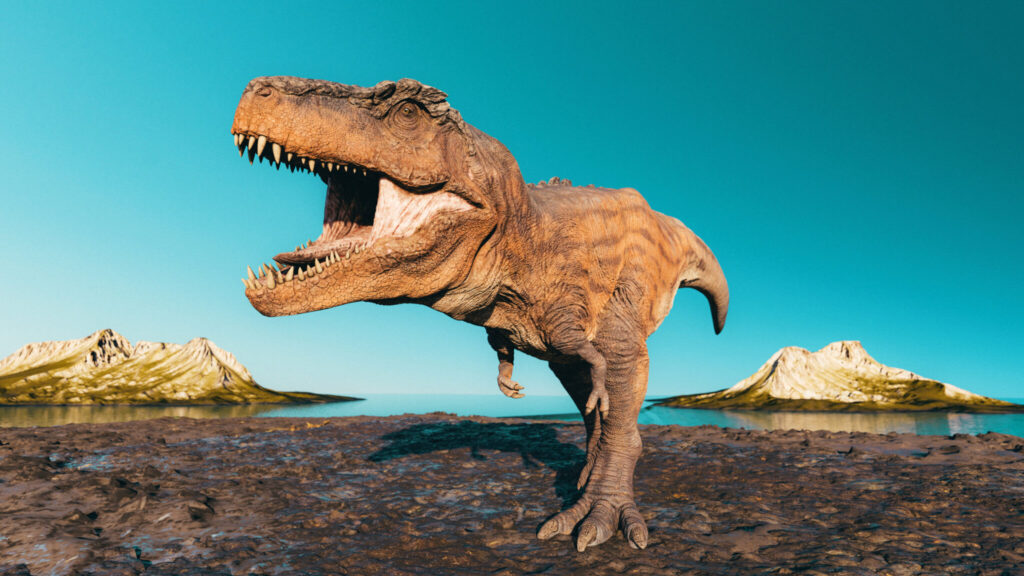
Scientists have reconstructed the air dinosaurs once breathed by analyzing oxygen isotopes preserved in fossilized teeth. The research, published in PNAS on August 4, demonstrates how dinosaur teeth can provide unprecedented insight into Earth’s prehistoric atmosphere and the interplay between greenhouse gases and plant life.
“Fossil tooth enamel can thus serve as a robust time capsule for ancient O₂ isotope compositions.”
“Quantifying ancient CO₂ levels, however, is challenging,” the authors wrote. “Air-breathing vertebrates respire oxygen (O₂) and incorporate its isotope signature via body water into their hard tissues. Fossil tooth enamel can thus serve as a robust time capsule for ancient O₂ isotope compositions.”
Read related story: Teeth solve mysteries, unearth history
How CO2 compared
The researchers found that carbon dioxide levels during the late Jurassic, around 145 million years ago, reached about 1,200 parts per million, dropping to roughly 750 parts per million in the late Cretaceous, about 145 to 66 million years ago. By comparison, today’s atmosphere contains around 430 parts per million and is still increasing. The team said intense volcanic activity during the Mesozoic era likely contributed to these elevated CO₂ levels.
They also found that plant activity, measured as gross primary productivity (GPP), was likely 20 to 120 per cent higher than today. GPP measures how much carbon plants absorb from the atmosphere during photosynthesis.
To be specific, the researchers reconstructed paleo-pCO₂, or the partial pressure of carbon dioxide in Earth’s atmosphere during the Mesozoic Era—the “Age of Reptiles,” spanning roughly 252 to 66 million years and including the Triassic, Jurassic, and Cretaceous periods.
“Here, we reconstruct Mesozoic paleo-pCO₂ levels from the triple oxygen isotope composition of dinosaur teeth and obtain paleo-pCO₂ levels 2.5 to 4 times higher than preindustrial values,” the authors wrote.
Read related story: Fossil teeth and history: top 3 studies revealing human evolution starting from 1.7 million years ago
Triple oxygen isotope
The triple oxygen isotope composition refers to the ratios of three oxygen isotopes—oxygen-16, oxygen-17, and oxygen-18—found in dinosaur tooth enamel. These isotopes behave slightly differently during natural processes, preserving information about the environment when the tooth formed. The study highlights the importance of oxygen-17 anomalies, a rare signature in the isotope mix that changes with atmospheric CO₂ levels and plant activity, allowing scientists to estimate both ancient greenhouse gas concentrations and global plant productivity.
Greek Reporter noted that some dinosaur teeth, including those of a Tyrannosaurus rex and a sauropod, showed higher oxygen-17 anomalies, which may reflect short-term CO₂ surges potentially linked to volcanic activity.
The dinosaur teeth analyzed in the study came from museum collections across Europe and North America. Contributors included the Sauriermuseum Aathal in Switzerland, the Naturkundemuseum Berlin in Germany, the Tyrell Museum in Drumheller, Canada, Naturalis in Leiden, the Dinopark Münchehagen in Germany, and the Geowissenschaftliches Museum Göttingen. Paleontologists Martin Sander and Emanuel Tschopp also provided detailed information on sauropod taxonomy, body mass, and stratigraphy to contextualize the isotopic data.

